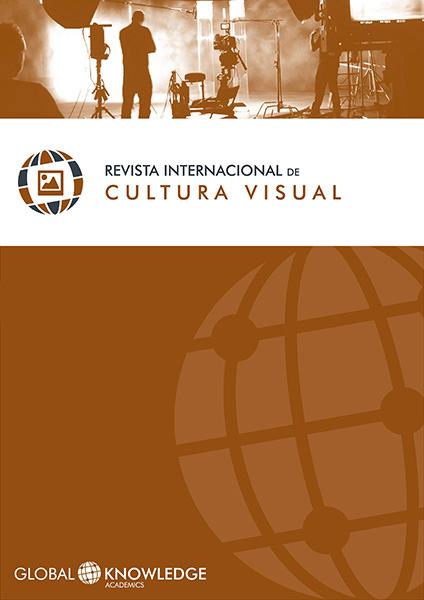Heros and Bodies. Body as a Subject of Propaganda
DOI:
https://doi.org/10.37467/gka-revvisual.v1.636Keywords:
Propaganda, Sport, Olimpic Games, Visual Strategies and Meaning ProcessAbstract
Body of athletes has been settled as a modern icon in the same movement that has settled the sport man into hero. But we can find the strategies to transform it into a deity or a product of marketing in such an old film as Olympia (1938), audiovisual discourse about Olympic Games of Berlin. It is also considered as one of the main examples of propaganda in modern cinema. We suggest a comparative analysis that confronts Olympia with First (2012), last official olimpic film distributed, where we can discover the propagandistic possibilities and the consequences of this visual strategies. Analysis proposes to study if the common places and strategies are not only form coincidences between both films but they are also purpose similarities. According to that, the body of athletes maybe has turned into a propaganda tool.
Downloads
Global Statistics ℹ️
|
604
Views
|
250
Downloads
|
|
854
Total
|
|
References
Baudrillard, J. (1978). Cultura y Simulacro . Barcelona: Editorial Kairós.
Baudrillard, J. (1996). El crimen perfecto . Barcelona: Editorial Anagrama.
Bauman, Z. (2006). Europa. Una aventura inacabada. Madrid: editorial Losada.
Debord, G. (1967). La sociedad del espectáculo . Valencia: Editorial Pre-textos.
Foucault, M. (1968). Las palabras y las cosas. Madrid: Siglo XXI editores.
Koepnick, L. (2008). Riefenstahl and the beauty of soccer. En N. Christian Pages, M. Rhiel e I. Majer-O´Sickey (eds.), Riefenstahl Screened, An anthology of New Criticism (pp. 52-71). USA: Bloomasbury. DOI: https://doi.org/10.5040/9781628928945.ch-003
Kracauer, S. (1947). De Caligari a Hitler. Una historia psicológica del cine alemán. Barcelona: Paidós Comunicación.
Kuper, S. (2012). Fútbol contra el enemigo. Barcelona: Ediciones Contra
Masuoto, N., Endo, T. y Hata, T. (1993). “Revival of Olumpia”: Reflections of Body by Leni Riefenstahl. Journal of Philosophy and Principles of Physical Education, 23, pp. 146-148.
Méndez Rubio, A. (2012). La desaparición del exterior . Zaragoza: Editorial Eclipsados.
Moragas, M. de. (1995). Television in the Olympics. Londres: John Libbey.
Moragas, M. de. (2011). Interpretar la comunicación. Estudios sobre medios en América y Europa. Barcelona: Gedisa
Pardo, J.L. (2010). Nunca fue tan hermosa la basura . Barcelona: Círculo de lectores.
Quintana, Á. (2003). Fábulas de lo visible . El cine como creador de realidades. Barcelona: Acantilado.
Rentschler, E. (1996). The ministry of illusion: Nazi cinema and its afterlife . Cambridge: Harvard University Press.
Riefenstahl, L. (2013). Memorias. Barcelona: Lumen.
Sandoval, T. (2005). Una mirada al mundo. Historia del cine documental alemán 1896-1945. Madrid: T&B Editores.
Seesslen, G. (2008). Blood and Glamour. En N. Christian Pages, M. Rhiel e I. Majer-O´Sickey (eds.), Riefenstahl Screened, An anthology of New Criticism (pp. 11-30). USA: Bloomasbury. DOI: https://doi.org/10.5040/9781628928945.ch-001
Downloads
Published
How to Cite
Issue
Section
License
Those authors who publish in this journal accept the following terms:
-
Authors retain copyright.
-
Authors transfer to the journal the right of first publication. The journal also owns the publishing rights.
-
All published contents are governed by an Attribution-NoDerivatives 4.0 International License.
Access the informative version and legal text of the license. By virtue of this, third parties are allowed to use what is published as long as they mention the authorship of the work and the first publication in this journal. If you transform the material, you may not distribute the modified work. -
Authors may make other independent and additional contractual arrangements for non-exclusive distribution of the version of the article published in this journal (e.g., inclusion in an institutional repository or publication in a book) as long as they clearly indicate that the work was first published in this journal.
- Authors are allowed and recommended to publish their work on the Internet (for example on institutional and personal websites), following the publication of, and referencing the journal, as this could lead to constructive exchanges and a more extensive and quick circulation of published works (see The Effect of Open Access).













